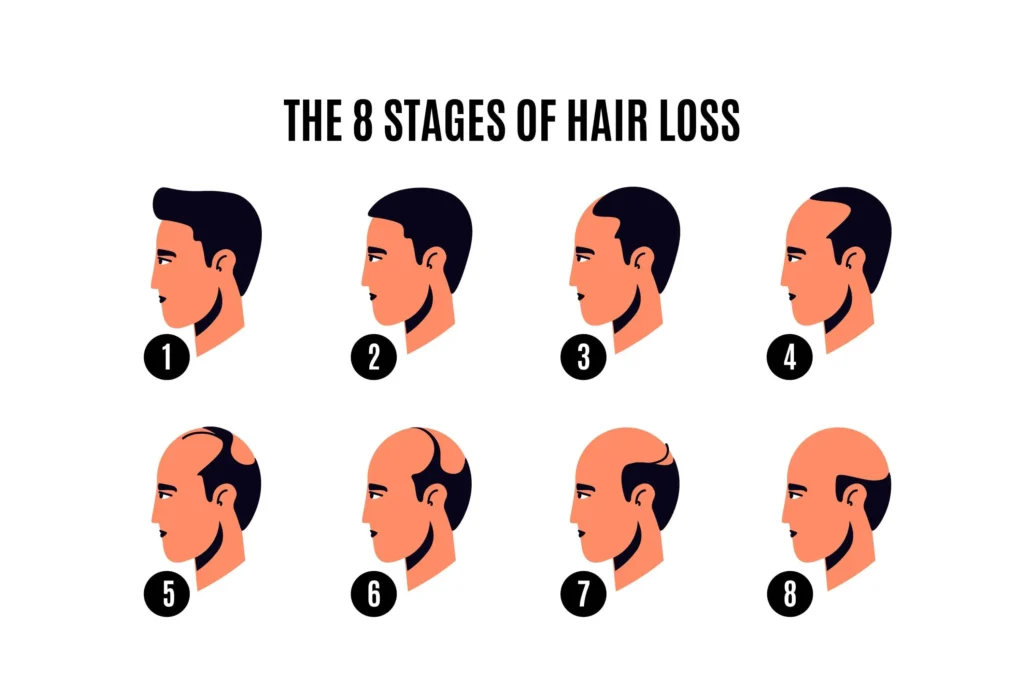
Hair loss is a common concern that affects millions of men worldwide. One of the most crucial tools for understanding and categorizing male pattern baldness is the Norwood Scale. This scale, developed by Dr. James Hamilton in the 1950s and later revised by Dr. O’Tar Norwood in the 1970s, provides a systematic way to identify the stages of hair loss. It is divided into seven key stages, each representing a different level of hair loss severity.
Recognizing which stage of hair loss you are in is vital for determining the most effective treatment options. This guide will delve into the details of the Norwood Scale, helping you understand each stage and explore the various interventions available to manage and potentially reverse hair loss.
Introduction to the Norwood Scale
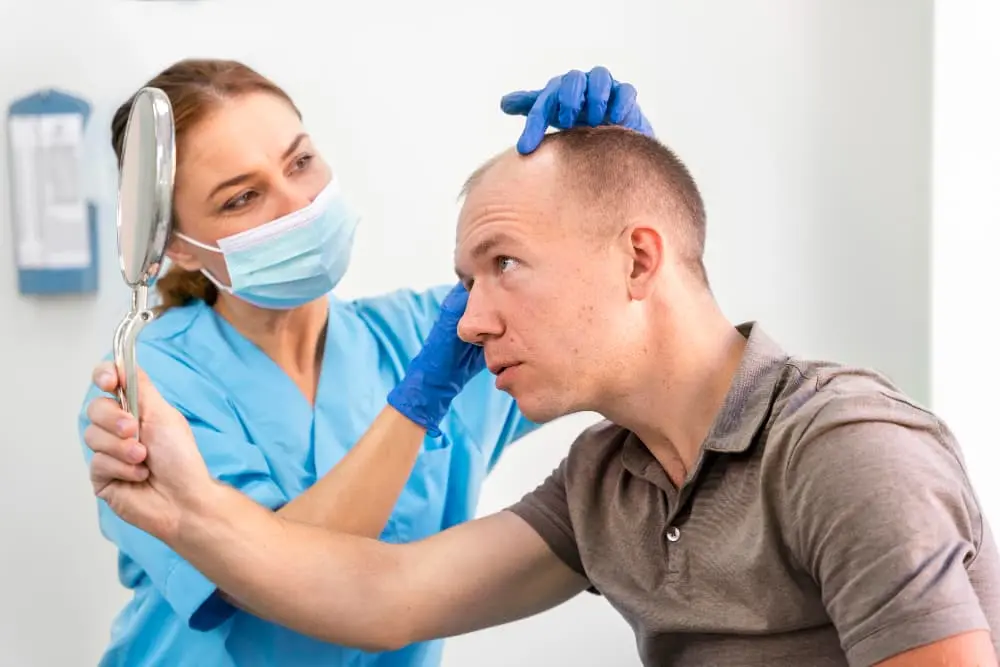
The Norwood Scale, formally known as the Norwood-Hamilton Scale, is the primary diagnostic tool used globally to categorize the stages of male pattern baldness. This scale is instrumental for dermatologists and hair restoration specialists to assess the extent of hair loss and discuss treatment options effectively with their patients. Understanding the scale helps patients identify their level of hair loss and evaluate appropriate interventions.
History and Development of the Norwood Scale
The origins of the Norwood Scale date back to the work of Dr. James Hamilton in the 1950s, who first categorized male pattern baldness into several stages. His initial work was revolutionary, providing a systematic approach to understand how male baldness typically progresses. It was later revised and expanded by Dr. O’Tar Norwood in the 1970s.
Dr. Norwood introduced more detailed subdivisions, which enhanced the scale’s accuracy and made it more practical for clinical use. This revised scale, now known as the Norwood Scale, comprises seven stages, each reflecting a greater extent of hair loss
The 7 Stages of the Norwood Scale
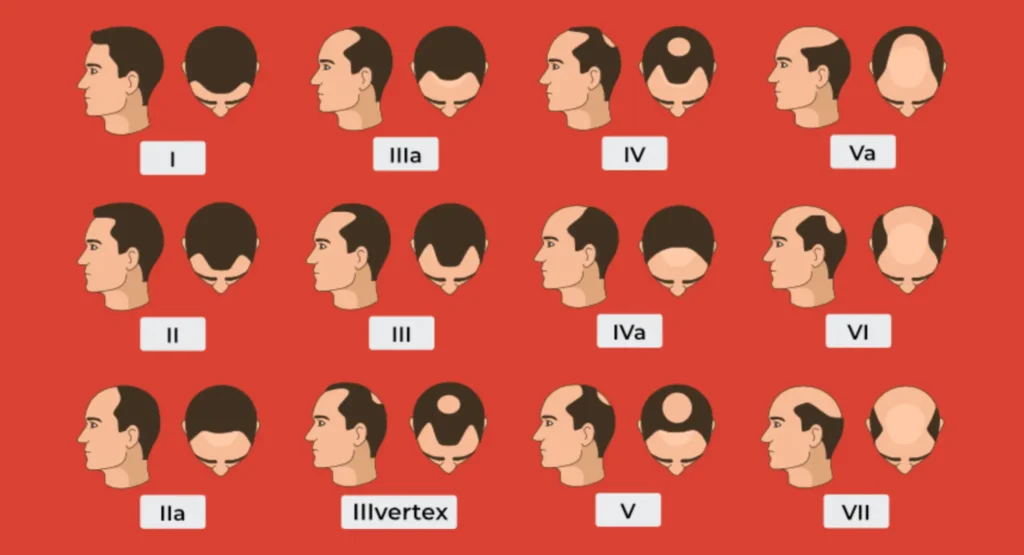
The Norwood Scale has 7 Stages. It ranges from Stage 1, which shows minimal hair loss, to Stage 7, where only a narrow band of hair remains around the sides and back of the scalp.
Understanding these stages is crucial for diagnosing the severity of hair loss and determining the most suitable treatment options, such as hair transplants or other hair restoration methods. Each stage represents a specific pattern of hair loss, providing a clear framework for assessment and intervention.
We have explained all of these 7 stages in detail for you.
Stage 1: Minimal Hair Loss
Stage 1 is characterized by very slight hairline recession, which typically goes unnoticed by others. The changes are so minimal that they often do not require any immediate intervention and may be visible only as a slight recession of the hair at the temples.
Stage 2: Receding Hairline
This stage marks the onset of noticeable hairline recession at the temples, resembling an M-shaped pattern. This early sign of male pattern baldness is where many men first realize that they are starting to lose hair. At this stage, intervention can effectively slow the progression of hair loss.
Stage 3: Deepening Hair Loss
Stage 3 is a turning point, with more visible recession at the temples and thinning at the crown, known as vertex balding. The hairline becomes markedly receded and shaped like a U or V. This stage often prompts many men to seek treatment options as the hair loss becomes more apparent and possibly a concern in terms of appearance.
Stage 4: Severe Hair Loss
In Stage 4, hair loss is more severe, with further recession of the hairline and sparse hair on the vertex. A band of moderately dense hair separates the hair loss at the frontotemporal region from that at the vertex. The extent of baldness becomes harder to conceal and may affect the individual’s self-esteem and image.
Stage 5: Advanced Hair Loss
Stage 5 indicates large areas of hair loss with very limited areas of denser hair. The separation between the hair loss at the frontotemporal region and the vertex is still present but becomes narrower and less distinct. This stage often leads to significant cosmetic concerns and may push individuals to consider more aggressive treatment options such as hair transplantation.
Stage 6: Extensive Hair Loss
By Stage 6, the bridge of hair that previously separated the frontotemporal region and vertex disappears, leaving a large bald area at the top and front of the scalp. Only sparse hair may remain on the sides and back of the head. This advanced stage requires substantial restoration efforts for those seeking to regain a fuller hair appearance.
Stage 7: Complete Hair Loss
The final stage of the Norwood Scale represents the most severe form of hair loss, with hair only remaining on the sides and back of the scalp in a horseshoe pattern. The top and front areas of the scalp show no significant hair presence. Individuals at this stage might explore extensive hair transplant options or other alternatives like hair systems.
Using the Norwood Scale to Assess Hair Loss
To accurately determine your stage on the Norwood Scale, it is advisable to consult with a hair restoration expert or dermatologist. These professionals can provide a detailed scalp examination and compare your hair loss pattern to standardized photographs representing each stage of the Norwood Scale.
Treatment Options by Norwood Scale Stage
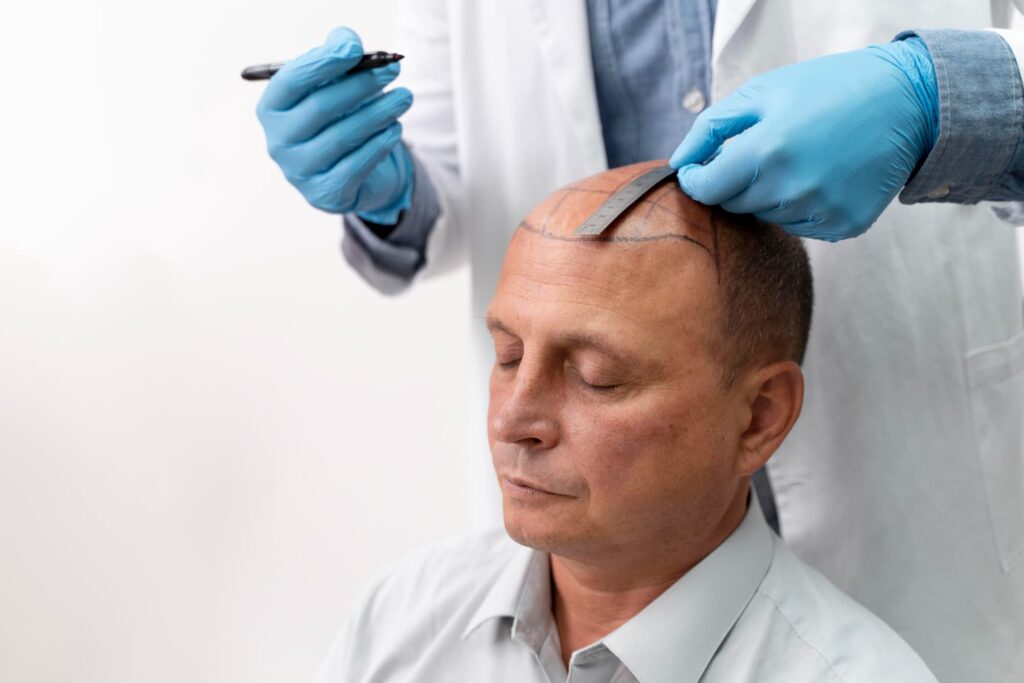
As we mentioned above, the Norwood scale has 7 stages. However, there are specific treatments between certain stages. Let’s examine it in more detail together.
Early Stage Treatments
For stages 1 to 3, treatment options focus on slowing hair loss and promoting hair growth. These may include topical treatments like procapil sprays, home mesotherapy treatments oral medications such as sawpall metto and lifestyle changes
Moderate Stage Treatments
In stages 4 and 5, treatments may become more intensive, including options like Platelet-Rich Plasma (PRP) therapy, mesothreapy, advanced microneedling with radiofrequency and laser treatments, or the beginning stages of considering hair transplants.
Advanced Stage Treatments
Stages 6 and 7 often necessitate more comprehensive treatment approaches, primarily focusing on hair transplantation techniques due to the limited effectiveness of other treatments at this advanced stage of hair loss.
Hair Transplant Options Based on Norwood Scale
Different stages of the Norwood Scale require tailored hair transplant solutions to achieve optimal results.
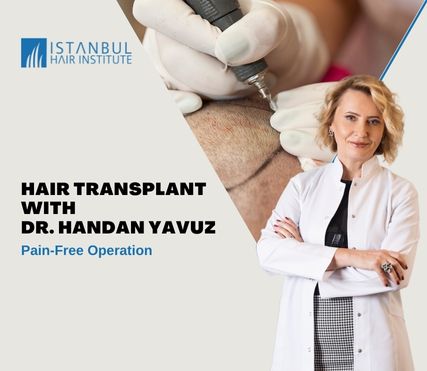
- For early stages (1-2), non-surgical treatments like PRP, mesotherapy or medication might suffice.
- Mid-stages (3-4) often benefit from Follicular Unit Extraction (FUE) or Direct Hair Implant (DHI), restoring hair density and hairline.
- Advanced stages (5-7) typically need extensive grafting to cover larger balding areas, ensuring natural and lasting results.
Understanding your Norwood stage helps in selecting the most effective hair transplant option for your needs.
Why Choose Turkey for Your Hair Transplant

Istanbul is a global leader in hair transplant surgeries due to its high-quality medical facilities, experienced surgeons, and cost-effective services. The combination of advanced technology, skilled practitioners, and relatively lower prices makes Istanbul an attractive destination for patients worldwide.
Cost Comparison: Turkey vs Europe and America
The cost of hair transplant procedures in Istanbul is generally lower than in Western Europe and North America. This cost-effectiveness, coupled with high standards of care and successful outcomes, makes Turkey a preferred choice for many seeking hair restoration solutions.
Quality and Success Rates in Turkey
Turkey is renowned for its high-quality hair transplant procedures, attracting patients from around the world. Clinics in Istanbul are equipped with state-of-the-art technology and staffed by highly skilled surgeons who ensure successful outcomes.
The combination of advanced techniques, experienced medical professionals, and comprehensive post-operative care results in high success rates and patient satisfaction. This reputation for excellence makes Turkey a top destination for hair restoration, offering both affordability and outstanding quality.
Planning Your Hair Transplant in Istanbul
When planning a hair transplant in Istanbul, consider the best times to visit, where to stay, and how to navigate the city. Many clinics offer packages that include accommodations and transport services to ease the logistics of your medical journey.
Your Hair Restoration Journey at Istanbul Hair Institute

At Istanbul Hair Institute, we prioritize excellence in every aspect of your hair restoration journey. Our clinic is equipped with state-of-the-art technology and led by a team of highly skilled physicians specializing in advanced hair transplant techniques like FUE, Sapphire FUE and DHI.
- Expertise and Advanced Techniques: Our experienced medical professionals employ the latest methods to ensure natural-looking and lasting results. Each procedure is tailored to meet the unique needs of our patients, enhancing both hair density and aesthetic appearance.
- Comprehensive Care: From the initial consultation to post-operative follow-ups, we provide comprehensive support to ensure your comfort and satisfaction. Our personalized care plans are designed to address your specific hair restoration goals, ensuring optimal outcomes.
- Affordable Excellence: Istanbul Hair Institute offers high-quality hair restoration services at a fraction of the cost compared to Western Europe and North America. This cost-effectiveness, combined with our high standards of care, makes us a preferred choice for many seeking hair restoration solutions.
- Tailored Packages: We offer various packages that include different hair transplant techniques and accommodation options to suit your specific needs and preferences. These packages ensure a seamless experience from arrival to departure, combining convenience and quality care.
- Patient Satisfaction: Our commitment to patient satisfaction is reflected in our high success rates and positive feedback from clients worldwide. We strive to make every step of your hair restoration journey smooth and successful, helping you regain confidence with a fuller head of hair.
Choosing Istanbul Hair Institute means opting for a clinic that values quality, innovation, and patient-centric care. Join the many satisfied patients who have transformed their lives with us and take the first step towards your hair restoration journey today. For more information, explore our packages.
Recent Posts
-
 Does Creatine Cause Hair Loss? Separating Fact from Fiction21 Jan 2025
Does Creatine Cause Hair Loss? Separating Fact from Fiction21 Jan 2025 -
 How Long Does Hair Transplant Last? A Comprehensive Guide to Long-Term Results15 Jan 2025
How Long Does Hair Transplant Last? A Comprehensive Guide to Long-Term Results15 Jan 2025 -
 Hair Loss After Hair Transplantation: Is It Normal and What to Do?13 Jan 2025
Hair Loss After Hair Transplantation: Is It Normal and What to Do?13 Jan 2025 -
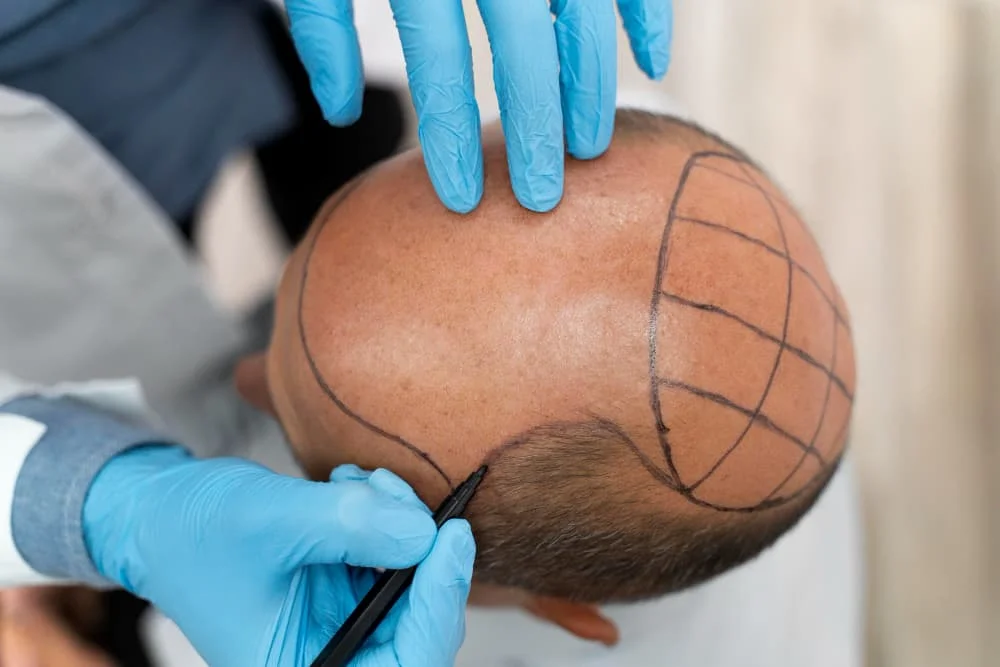 Donor Area in Hair Transplant: All You Need to Know - Istanbul Hair Institute06 Jan 2025
Donor Area in Hair Transplant: All You Need to Know - Istanbul Hair Institute06 Jan 2025 -
 The Connection Between Oral Health and Overall Health03 Jan 2025
The Connection Between Oral Health and Overall Health03 Jan 2025

